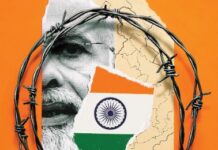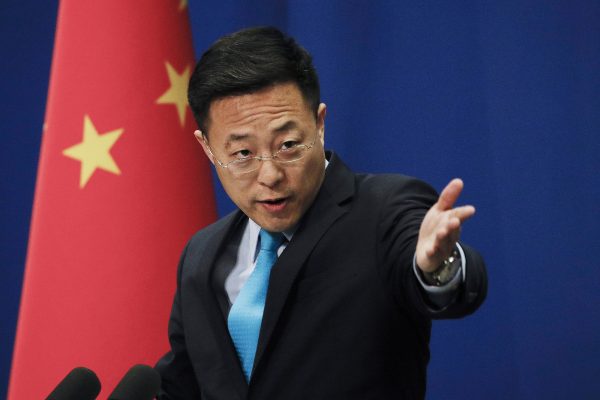US President Joe Biden and other Western leaders had tough words for Russia and China after wrapping up the G7 Summit in England, but they had trouble finding common ground on some big issues. Joe Biden set clear goals and promised to strengthen alliances and make it clear to Putin and to China that Europe and the USA are tight. The biggest argument against calling the unfolding conflict a new Cold War is the claim that, unlike the USSR, China is a lynchpin of the world economy and dominates global supply chains in a way that it is impossible to firewall those linkages.
The Biden Administration— that has sought to take allies and partners along to bring collective pressure on China in a bid to advance US interests— has framed this rivalry as an ideological and existential struggle between democracies and autocracies and made it a focal point of its foreign policy. The joint statement after the G7 summit pushed for a Cold War against China.
The 2021 G7 summit of the world’s seven largest, advanced economies— Germany, Italy, Canada, France, Japan, the United Kingdom and the USA— has seen the club of the world’s richest democracies returning to a script and setting they are more familiar with. It is also evident that creation of power blocs remains central to US foreign policy doctrine when faced with strong strategic challenge from a peer competitor. In the G7 summit, Biden presented his agenda and said that the democratic alliances and institutions proved their capacity against modern-day threats and adversaries. The partnership between Europe and the USA, and the cornerstone of this agenda at Cornwall, was building a broad coalition against the growing Chinese influence on the global stage. This presents a problem because many European nations including its leading economies have their own reasons for not wanting to antagonise China.
French president Emmanuel Macron considers joining an anti-China bloc an erosion of strategic autonomy. German chancellor Angela Merkel was instrumental behind the EU-China Comprehensive Agreement on Investment (CAI) deal. These disparities continue to pull the trans-Atlantic partnership in different directions.
France, Germany, Italy and the European Union were clearly concerned about risking their huge trade and investment deals with Beijing or accelerating what has increasingly taken on the tones of a new Cold War. The multiplicity of approaches towards China— there seems to be a French China policy, a British policy that differs from a German strategy and so on— all revolve around the need for the EU to strike the right balance between cooperation, competition and free trade. This inconsistency and mismatching of priorities make it difficult for these groupings to arrive at a consequential China policy.
There is no real clarity about the G7 alternative to the BRI and how they will act on their declarations. Money is going to be the biggest hurdle. The G7 is no longer the dominant economic player in the world, with its share of the world economy dropping to about 30 percent, a steep fall from the 70 percent it enjoyed till about three decades ago.
China’s Belt and Road Initiative (BRI) was another thing in the G7’s crosshairs. The summit formally unveiled the US-backed Build Back Better World (B3W) plan as an alternative to the BRI. The cornerstone of G7’s proposed alternative to China’s grand Belt and Road Initiative, cornily named Build Back Better World (B3W), has grand plans of countering China’s multi-trillion-dollar infrastructure programme by providing a transparent infrastructure partnership to help narrow the $40 trillion needed by developing nations by 2035, but the initiative is as impressive on paper as it is vague on specifics. The B3W is ambitious, but lacks a well-defined structure, has no clarity on logistics or financing beyond saying that it will mobilise private sector capital, which is odd given its scale and it is not clear why low- and middle-income countries will rely on an ill-defined patchwork of programmes by America and its allies instead of a single, efficient source of funding and execution.
A growing convergence in thinking on China is reflected directly and indirectly in the G7, US-EU and US-NATO communiqués. The summits hit China indirectly in referring to forced technology transfer, use of forced labour in global supply chains, market-distorting actions of state-owned enterprises, creation of excess capacities through subsidies, high quality infrastructure, rebalancing of global supply chains in semiconductors, among others. The US-NATO document sees China’s growing influence and international policies, expanding nuclear arsenal, military modernisation, and military cooperation with Russia as challenges to NATO’s security interests. China is directly targeted by the G7 on human rights, especially in Xinjiang and also on Hong Kong, the situation in the East and South China Seas, the Taiwan Strait, and a free and open Indo-Pacific. On the subject of extreme sensitivity to China, the US-EU document calls for progress on a transparent, evidence-based, and expert-led WHO-convened study on the origins of covid-19, that is free from interference.
In order to counter new foreign sanctions, China started ‘Wolf Warrior’ diplomacy to dissuade G7 member states from imposing new sanctions against Beijing under pressure from the USA. It was Chinese President Xi Jinping himself who first introduced China’s Wolf Warrior diplomacy, which originated from Chinese great diplomatic philosophy, and bolstered the Chinese public’s sense of nationalism as part of a strategy to further consolidate his power and increase his prestige.
Moreover, Chinese diplomats demonstrated a fighting spirit and took a tough stance on Sino-US relations and international challenges. The Standing Committee of the National People’s Congress of China hastily passed its new law on countering foreign sanctions. G7 and European Union countries imposed sanctions on certain Chinese companies and individuals, after which Beijing imposed counter-sanctions on the countries in question.
There is no real clarity about the G7 alternative to the BRI and how they will act on their declarations. Money is going to be the biggest hurdle. The G7 is no longer the dominant economic player in the world, with its share of the world economy dropping to about 30 percent, a steep fall from the 70 percent it enjoyed till about three decades ago. The western economies are facing a debt crisis and no one really knows how the B3W is going to be financed, while the BRI already has a funding portfolio of nearly $4 trillion and a presence in nearly 100 countries in some form or the other.
Moreover, the developing world might be inclined to go with the BRI because of China’s liberal policy. Subsequently, the glue which binds together the seven countries is no longer wealth, but the ideology of democracy. Whether Europe will want to challenge China, which is way too much integrated into the European economy, beyond a point remains to be seen. Ironically, the US, too, is actively engaged with China.























